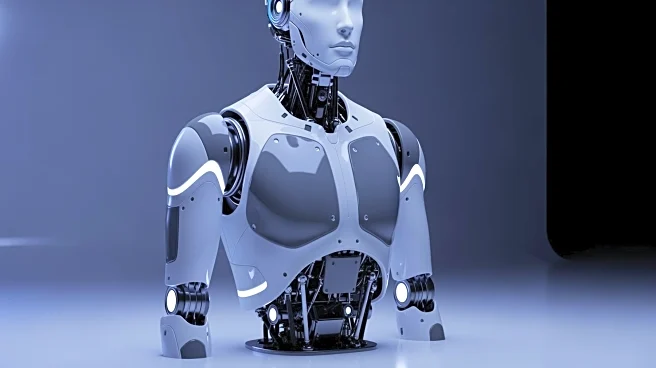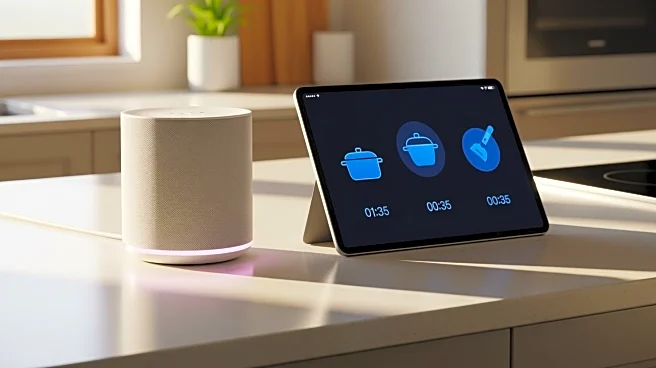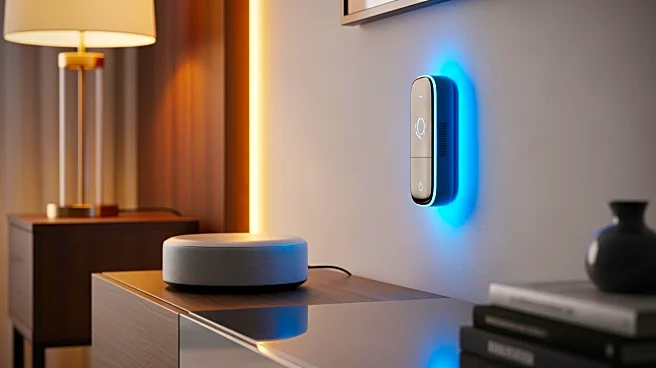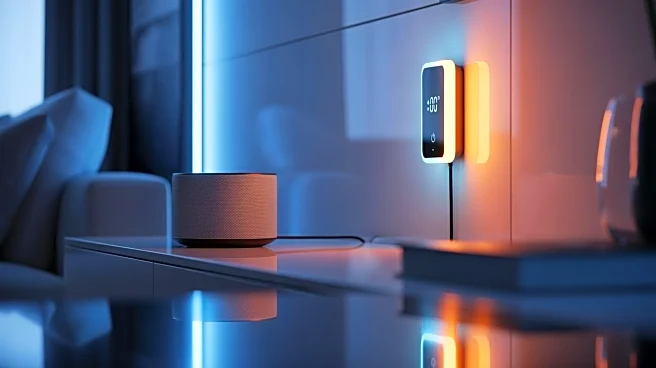What's Happening?
Recent advancements in IoT protocol stack design have significantly improved communication efficiency within smart home environments. The system employs a Random Forest-based interoperability analysis
to ensure seamless communication between heterogeneous smart home devices. This approach involves a hybrid edge-cloud architecture that balances local processing for fast responses with cloud support for scalability and advanced intelligence. The system dynamically selects and adapts communication protocols, enabling real-time command and data translation between incompatible devices. This innovation enhances overall system efficiency and improves the smart home user experience by maintaining high levels of communication interoperability and minimizing errors.
Why It's Important?
The development of an optimized IoT protocol stack is crucial for the future of smart home technology, as it addresses the growing need for real-time adaptability and interoperability among diverse devices. By improving communication efficiency, this system supports intelligent, autonomous interactions among household appliances, which can lead to enhanced energy management and user convenience. The integration of machine learning techniques, such as the Random Forest algorithm, allows for robust and adaptive solutions that leverage both historical and real-time data streams. This advancement is likely to drive further innovation in smart home technology, potentially influencing consumer adoption and market growth.
What's Next?
The next steps involve further refinement of the IoT protocol stack to enhance its adaptability and scalability. As smart home technology continues to evolve, there may be increased collaboration between tech companies and IoT developers to integrate these advancements into commercial products. Additionally, ongoing research and development could focus on expanding the system's capabilities to support more complex smart home environments and applications. Stakeholders, including tech companies and consumers, are likely to monitor these developments closely, as they could lead to new opportunities for innovation and market expansion.
Beyond the Headlines
Beyond immediate improvements in smart home communication, the optimized IoT protocol stack could have broader implications for the IoT industry. The integration of machine learning-driven protocol management may set a precedent for future IoT systems, encouraging the adoption of similar technologies across various sectors. This could lead to increased efficiency and interoperability in other IoT applications, such as smart cities and industrial automation. Furthermore, the focus on context-aware protocol management highlights the importance of adaptive systems in maintaining reliable performance, which could influence future IoT design standards.











